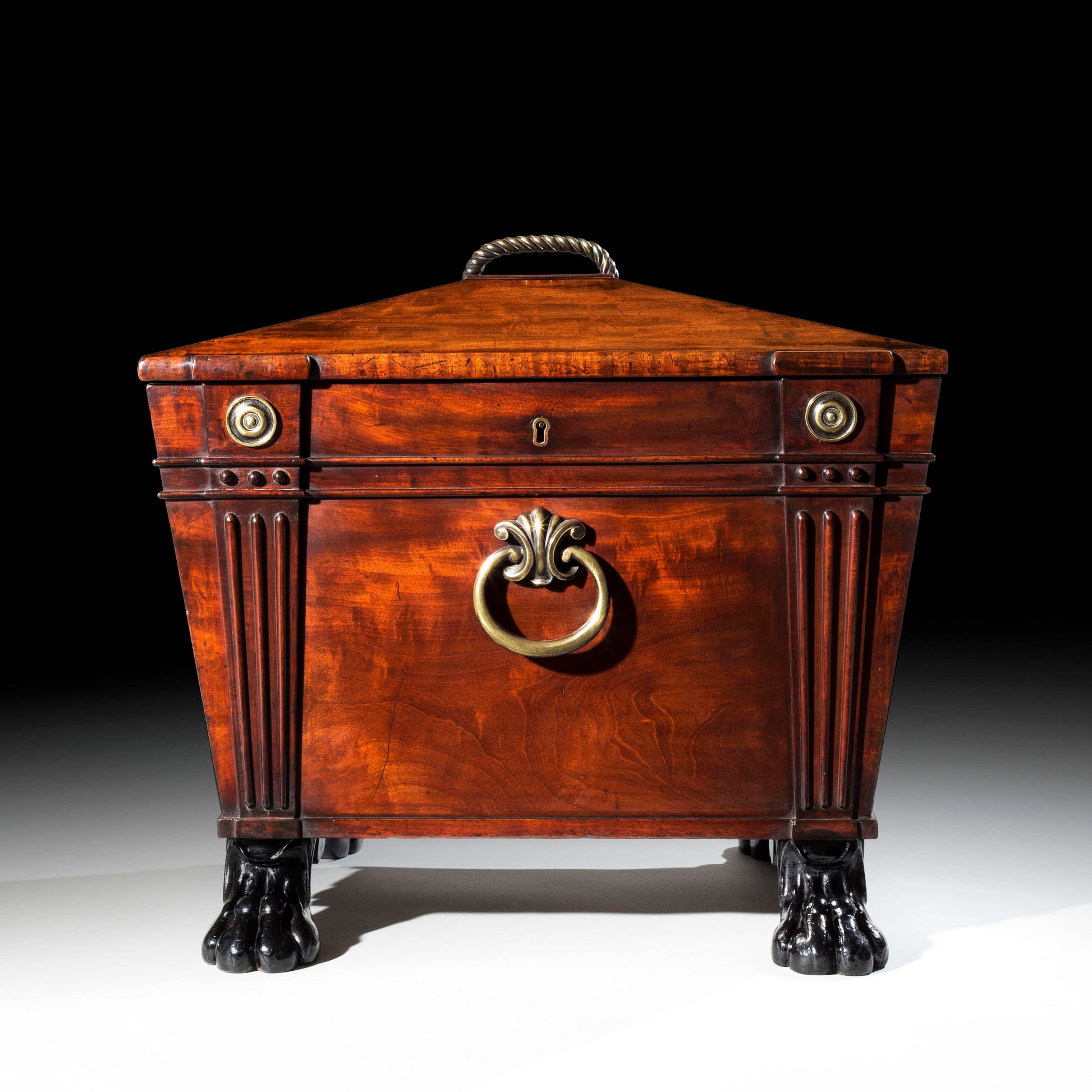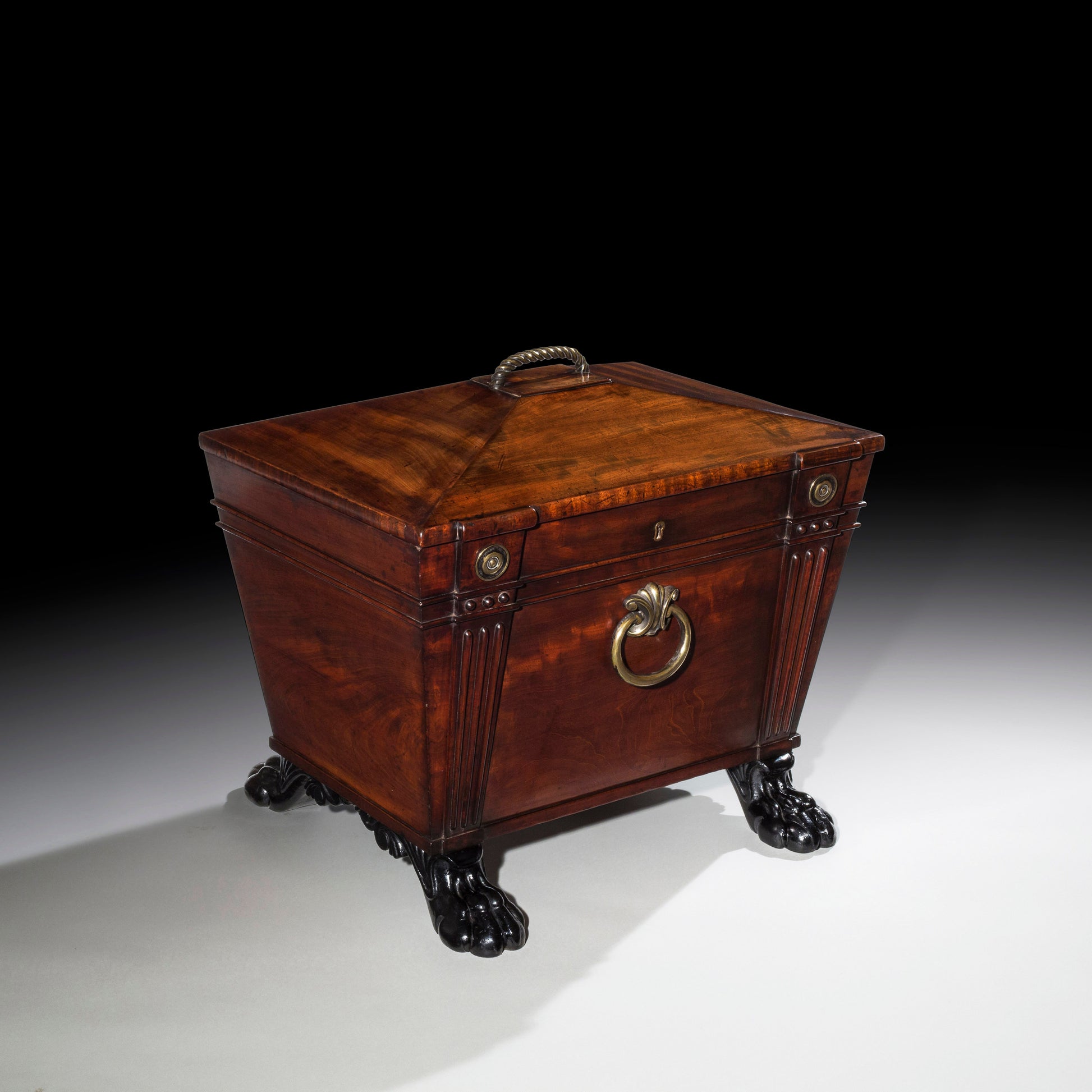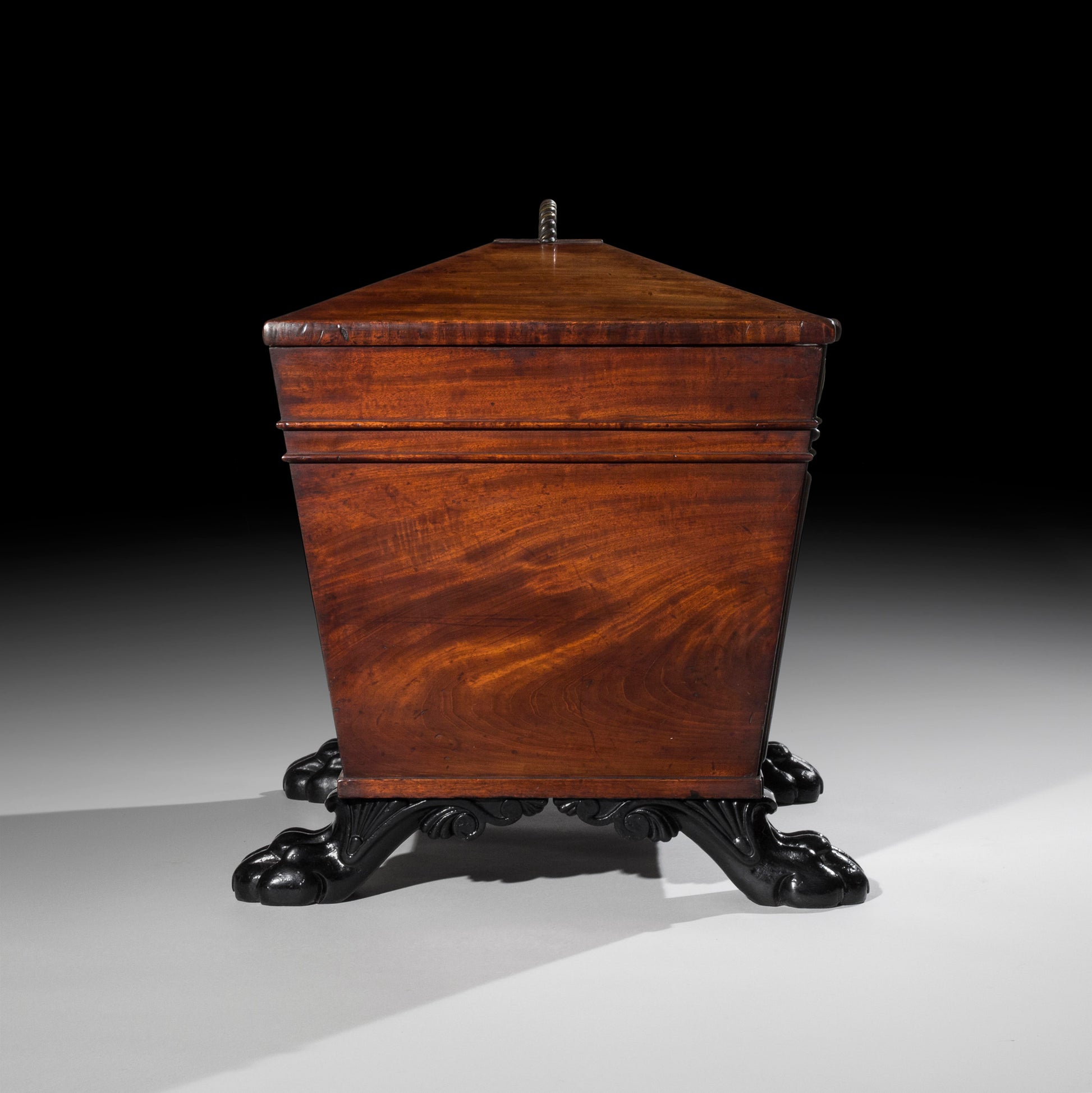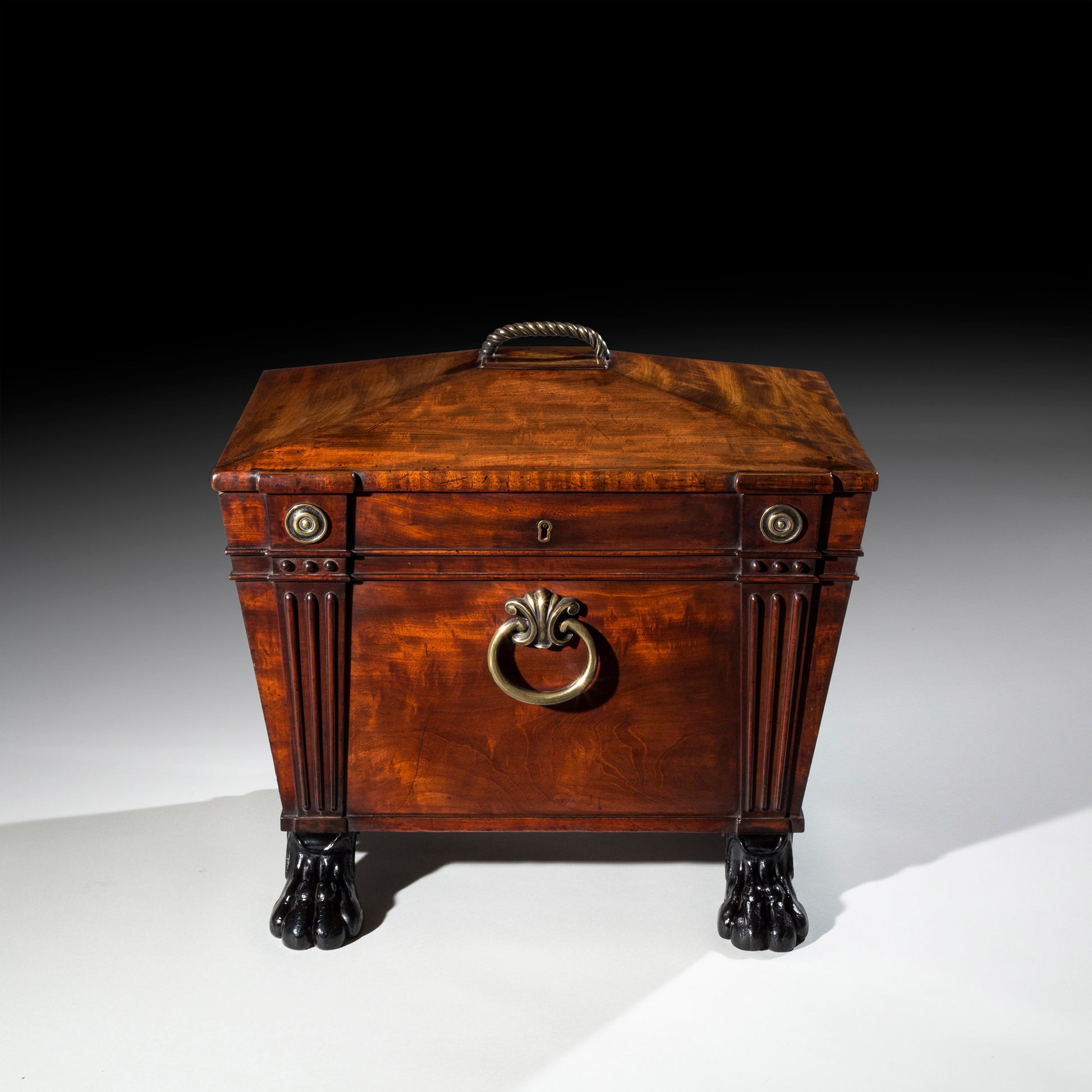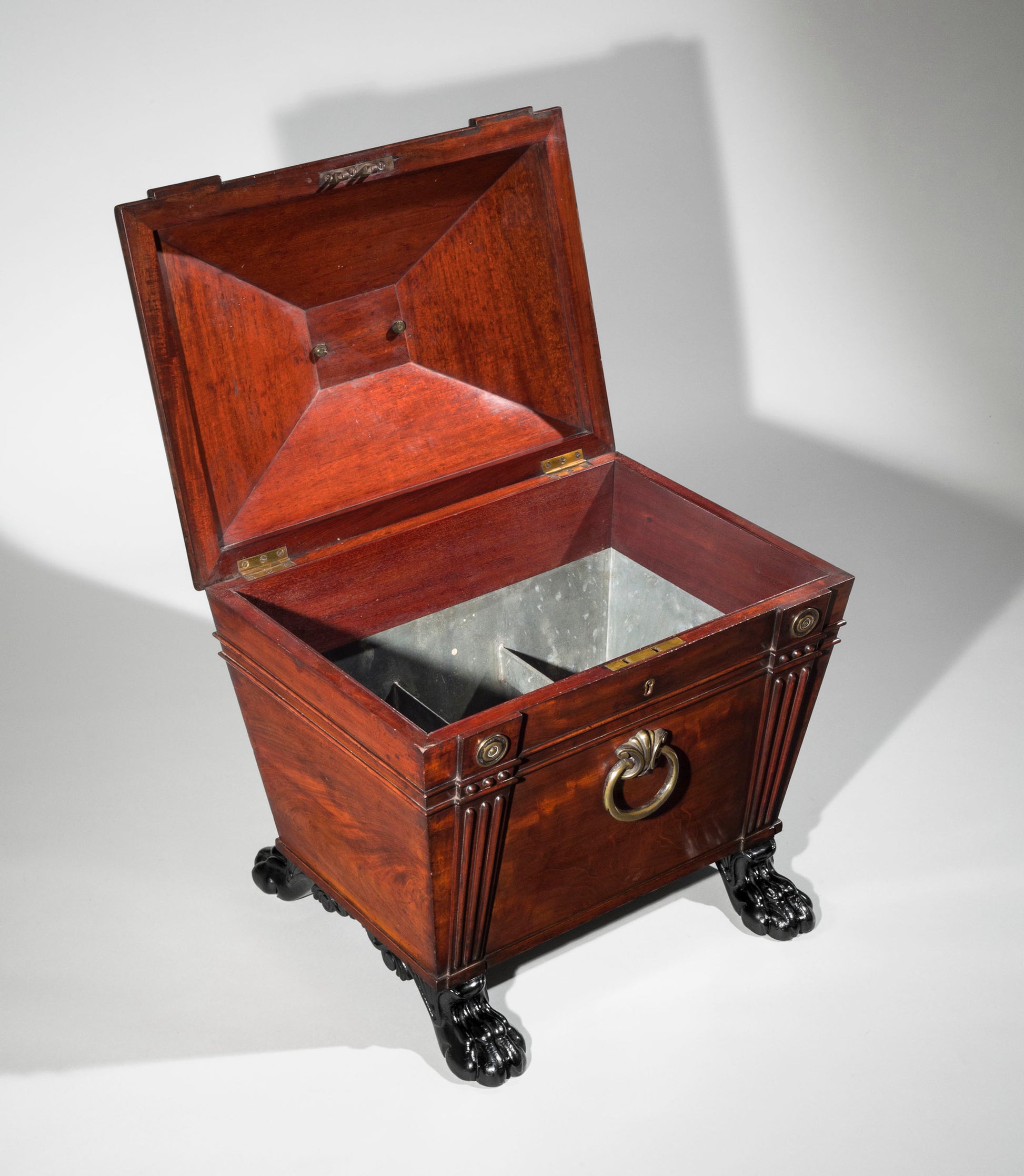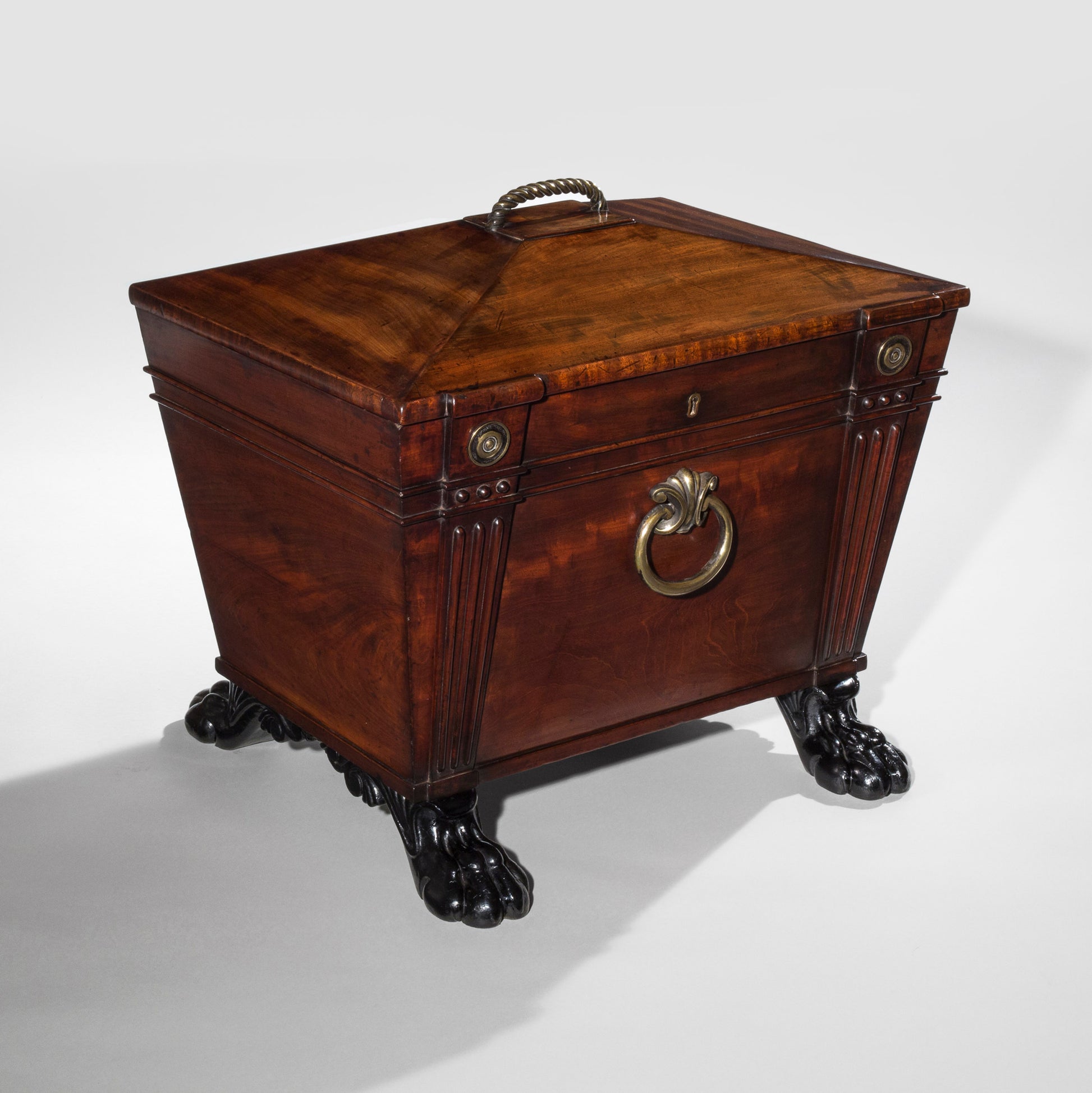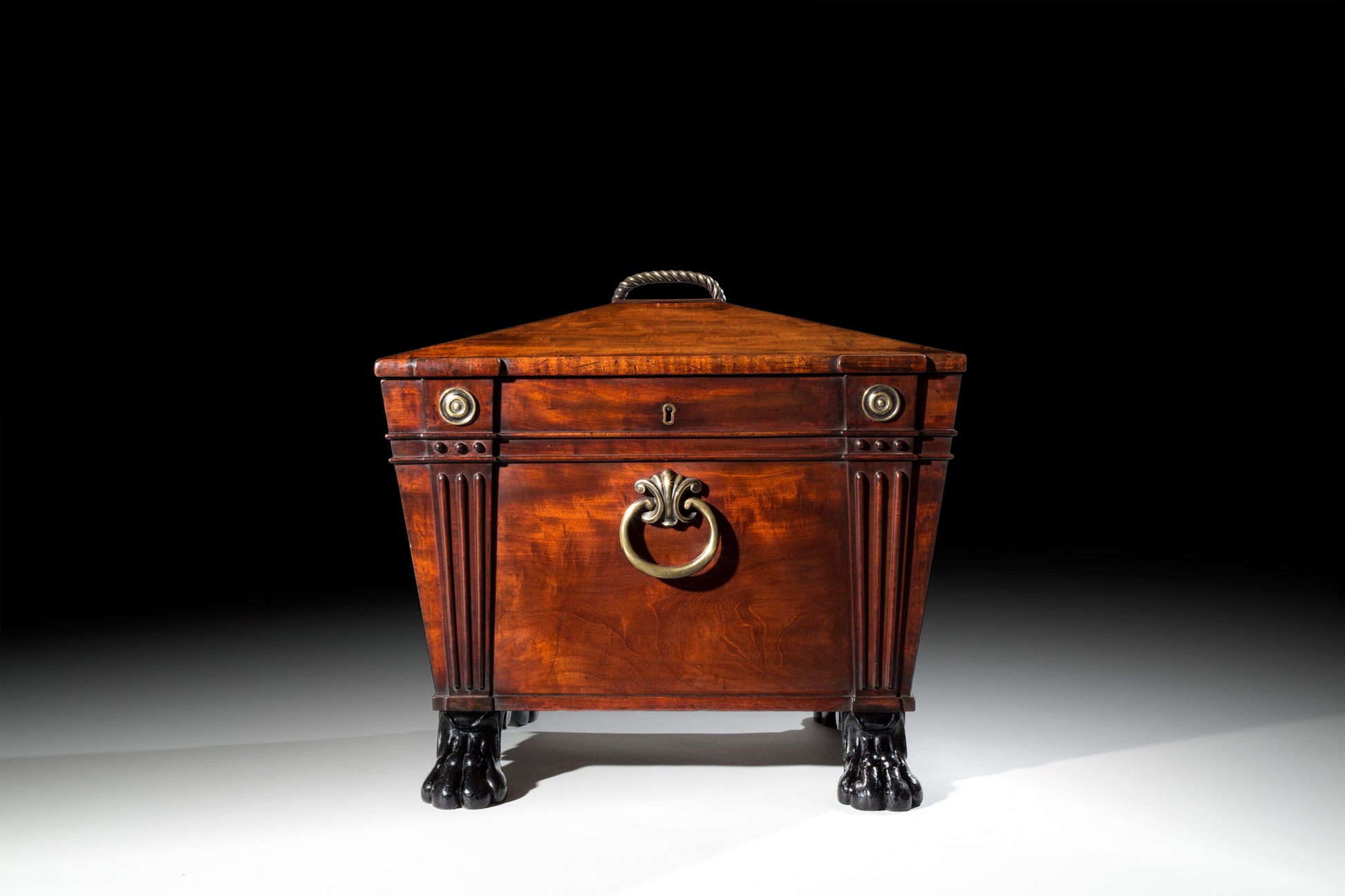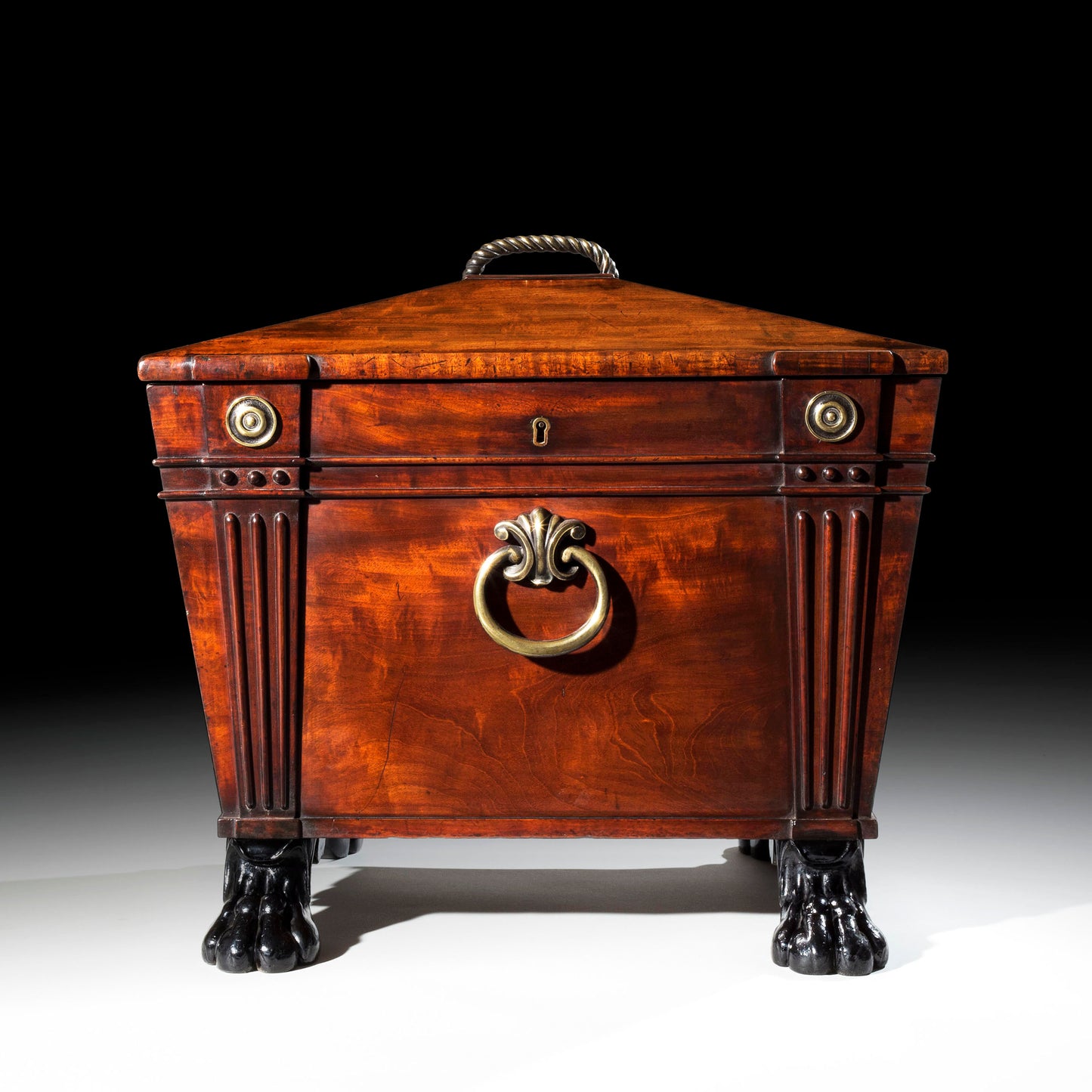
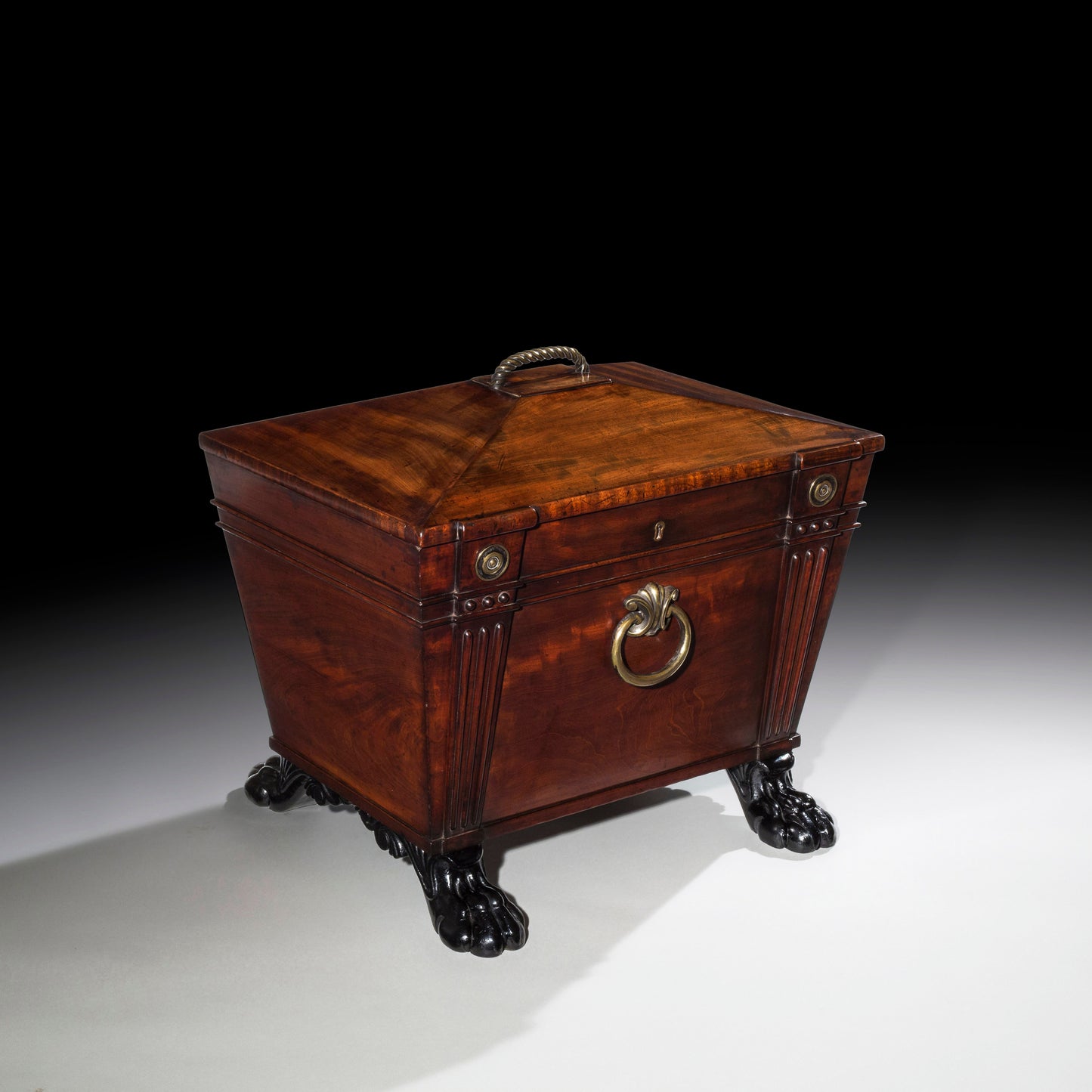
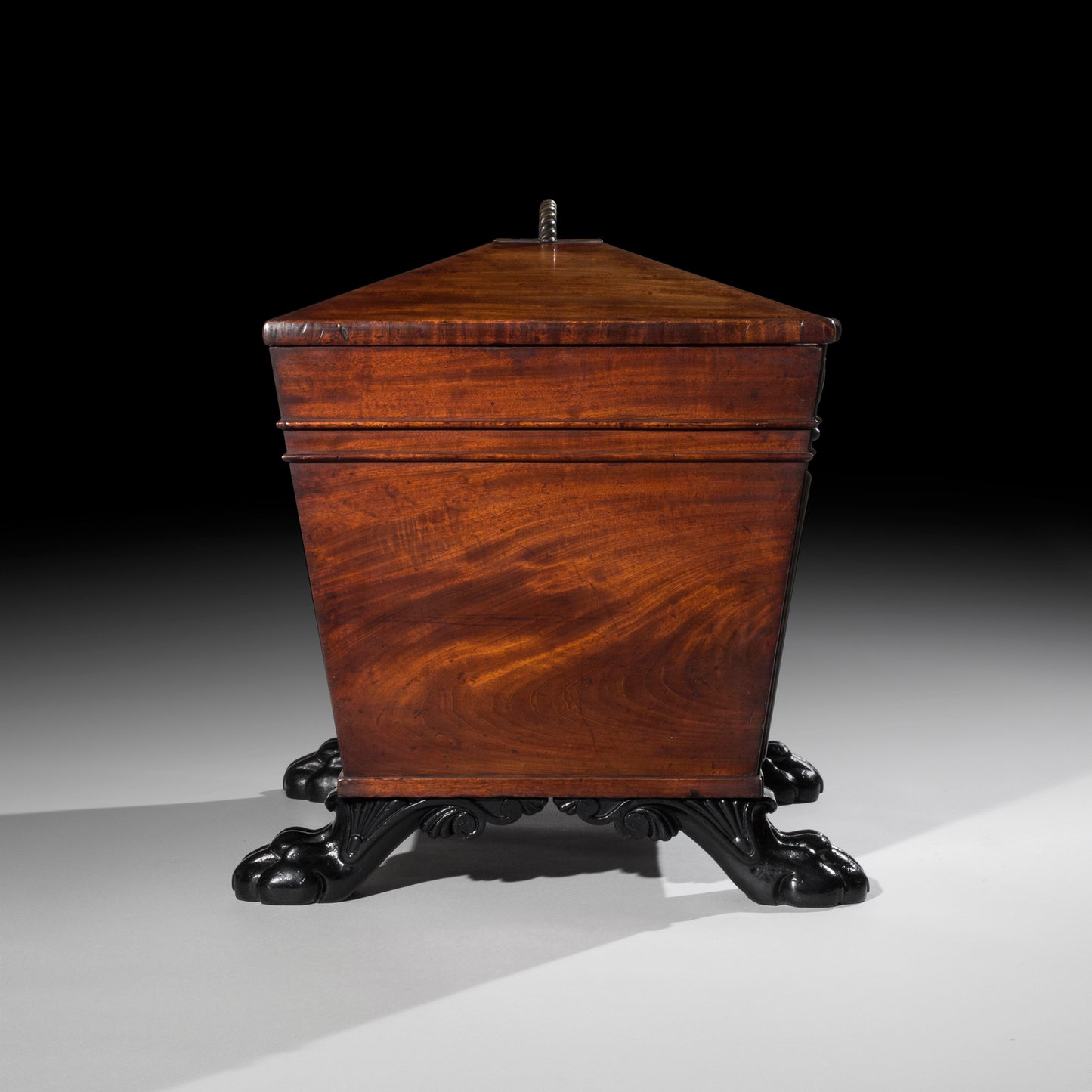
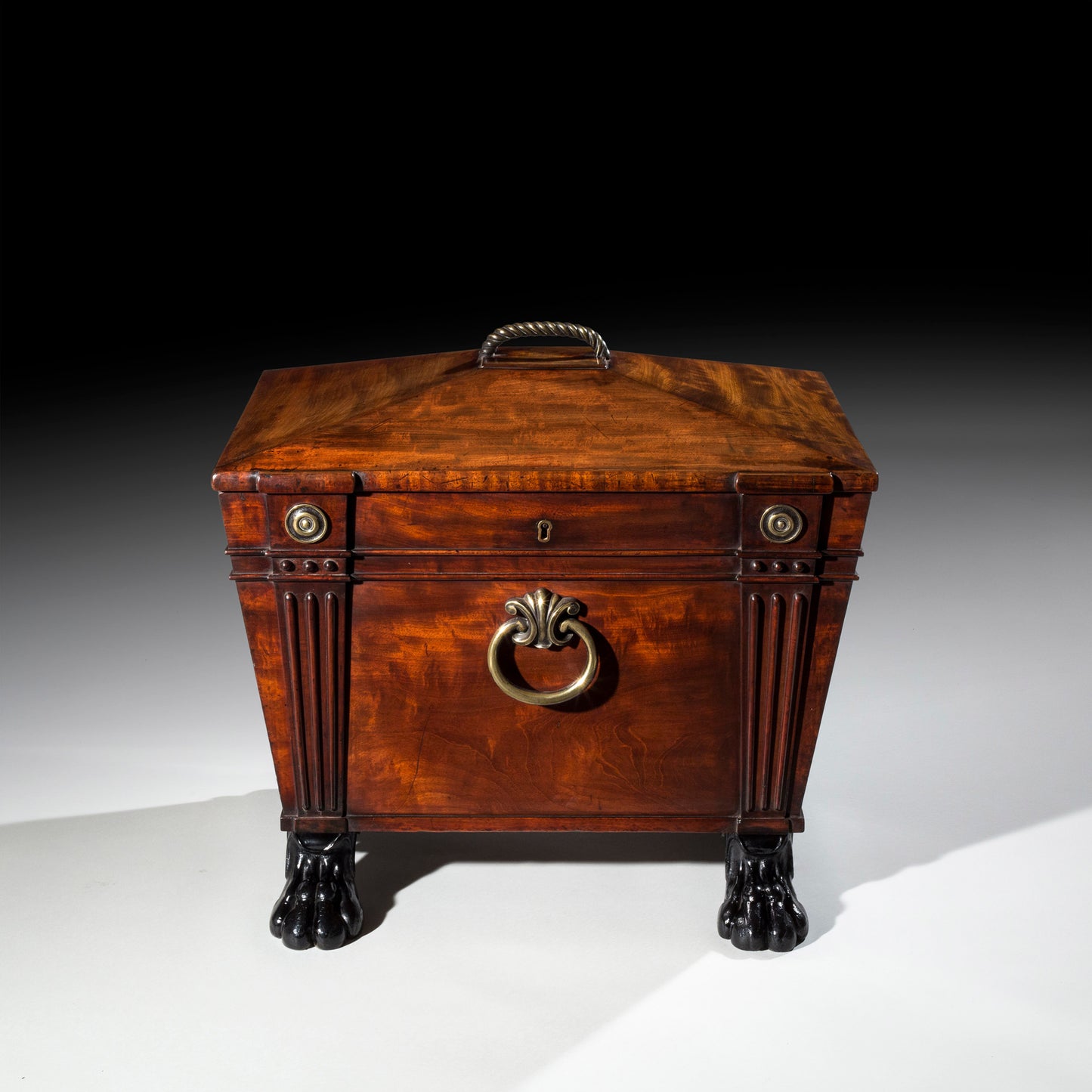
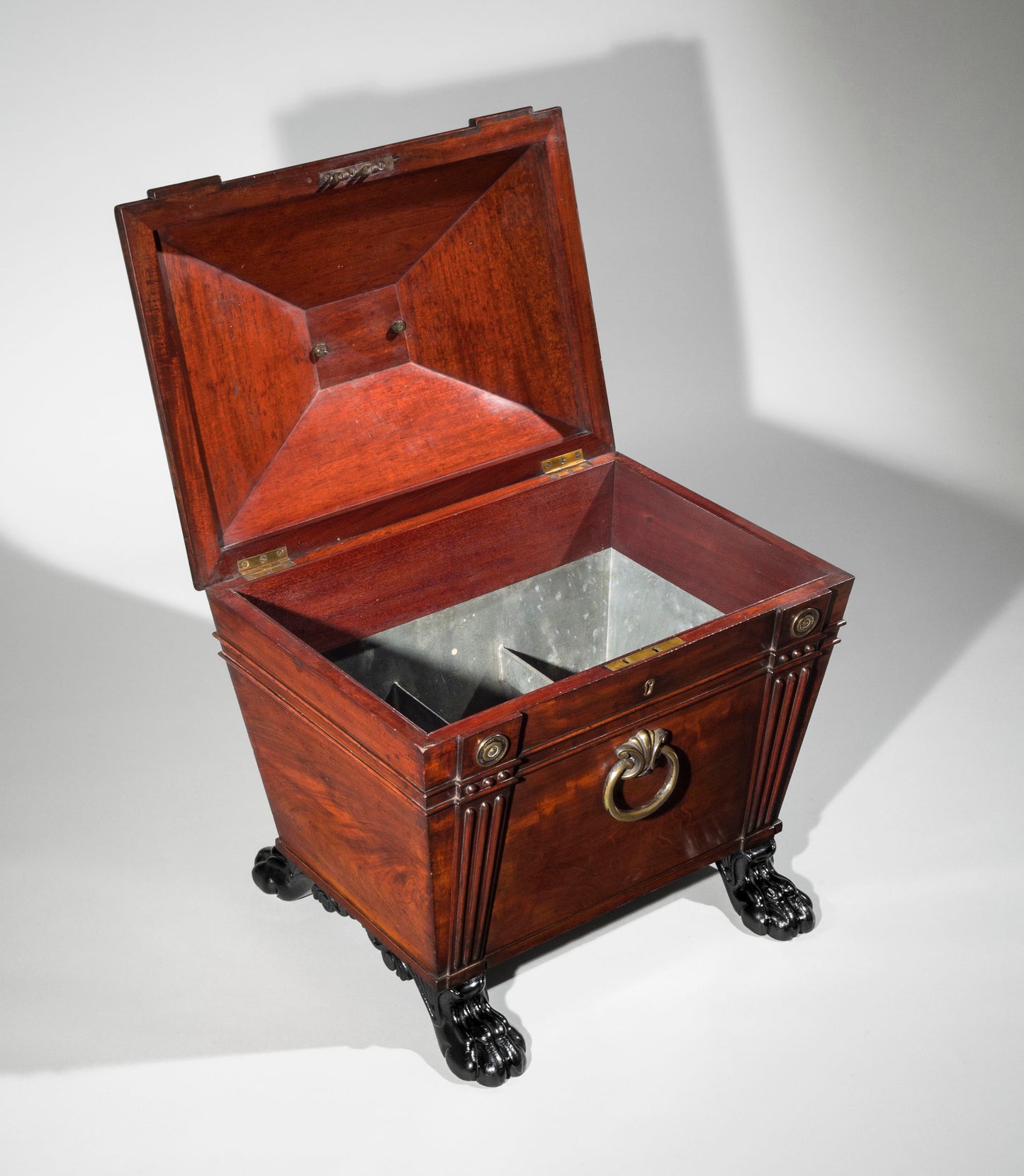
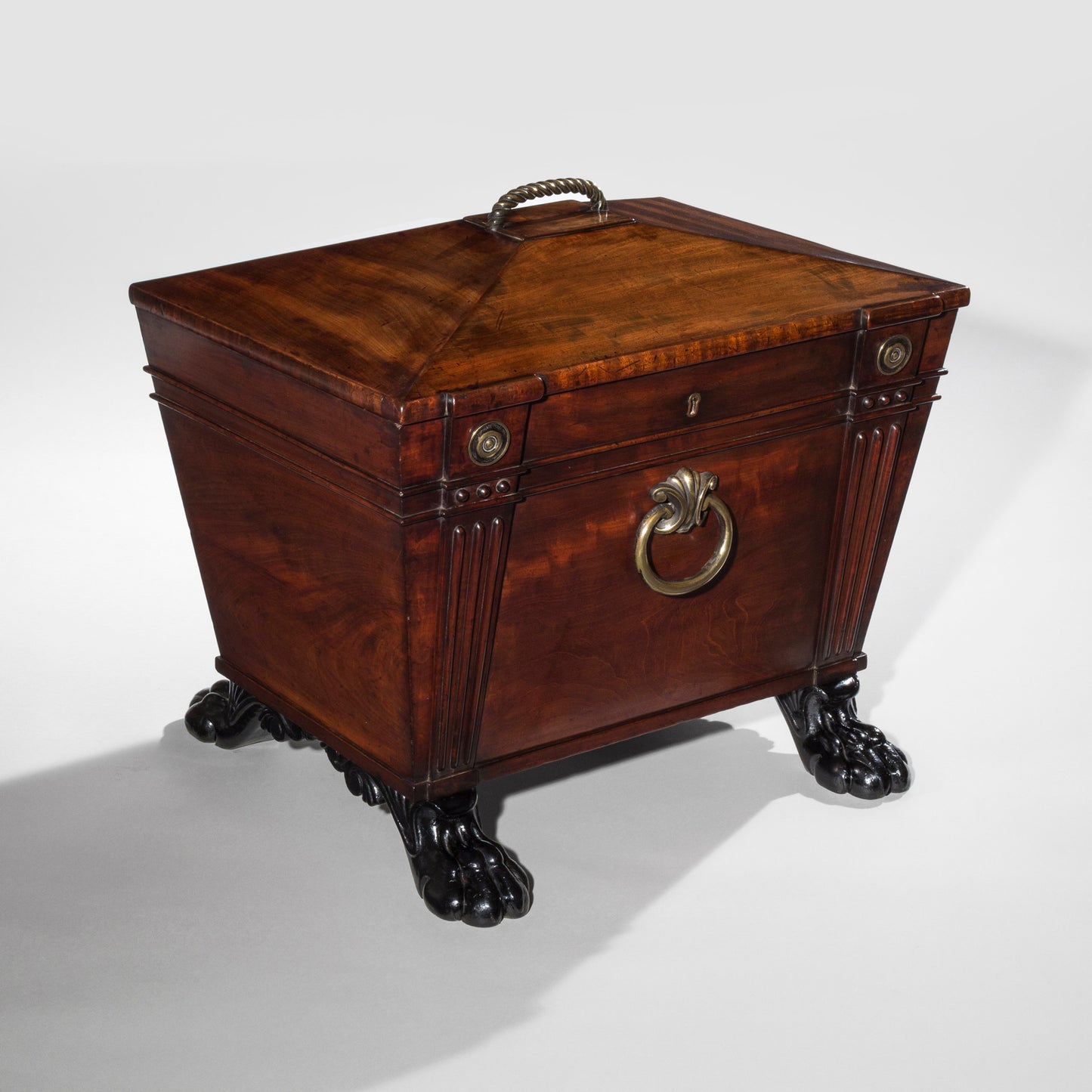
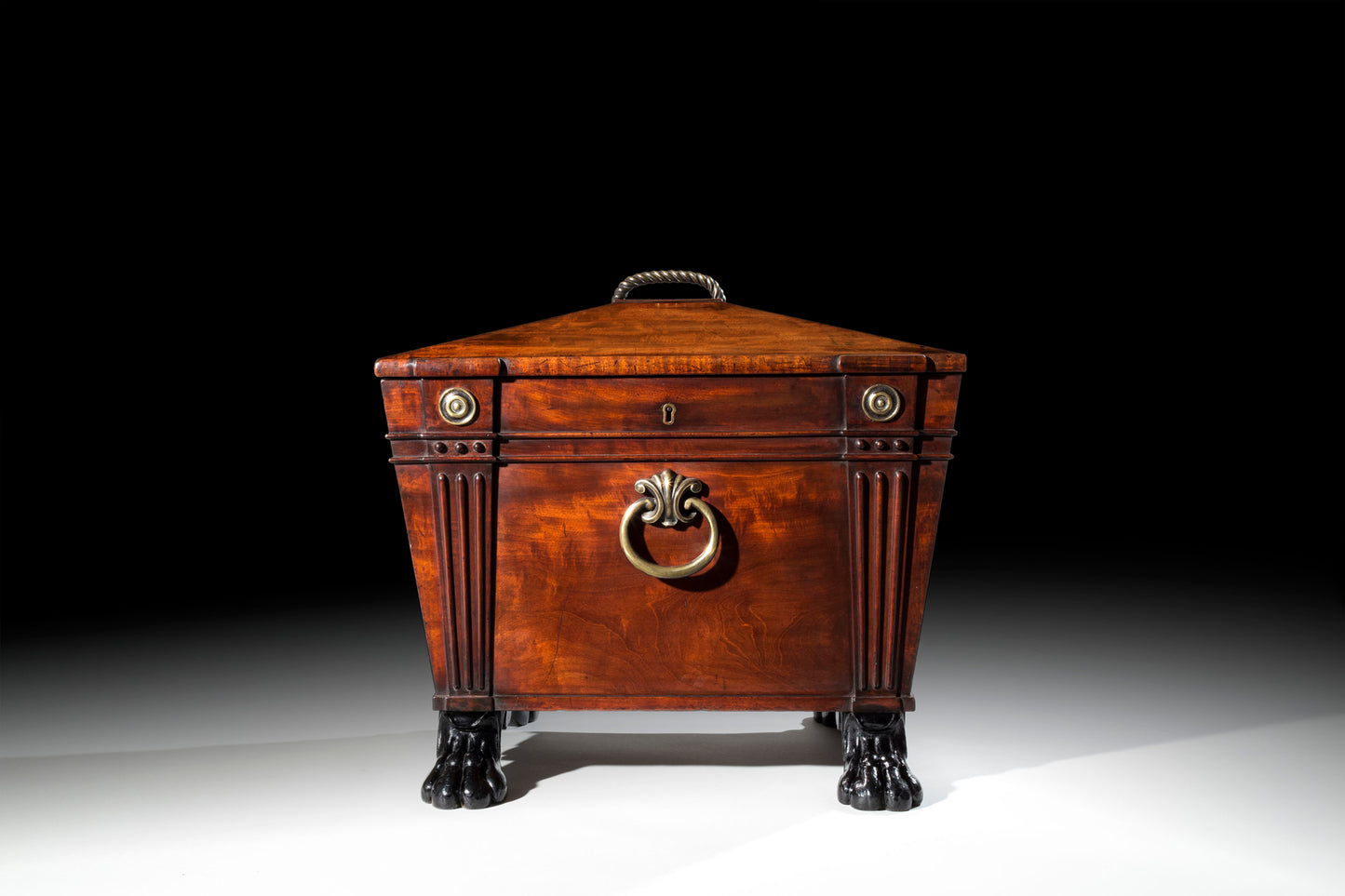
A very fine quality English early 19th century carved mahogany wine cooler or cellaret, of generous proportions, after a design by Charles Heathcote Tatham
Circa 1815.
Why we like it
A remarkably graphic and architectural design, strongly influenced by the Roman antiquity. Beautifully decorative and useful piece, which had certainly seen a party or two in its 200+ years lifetime. Such a smart and sophisticated piece would likely have graced a fashionable Regency interior of great refinement.
Amazing state of preservation, too: desirable mellow colour and marvellous figuring to veneers. Fully original and functional lead linings. A rare opportunity to own this remarkable design.
Conceived in the 'Antiquarian' manner, popularised in the late 18th -early 19th centuries by England's leading architects and designers, such as Henry Holland, Charles Heathcote Tatham, Thomas Hope, George Smith and etc., this cellaret has the distinctive sarcophagus shape, modelled after an ancient Roman porphyry sarcophagus known as the “Tomb of Agrippa.” Marcus Vipsanius Agrippa (c. 64/62 BC–12 BC) was a Roman statesman and general who played an instrumental role in transforming the Roman Republic into the Principate by aiding Octavian, later known as Augustus, first emperor of the Roman Empire. Arguably the most notable contribution, however, was the building complex constructed on his own land in the Campus Martius, consisting of the Basilica of Neptune, the Baths of Agrippa and the Pantheon. The ‘sarcophagus’ was, in fact, a basin from the Baths. It was discovered in the fifteenth century, and was “admired not only for its artistic merit, but for the porphyry out of which it was made, and the great name with which it was associated.” After its discovery, the sarcophagus was displayed in Rome, and has served as the tomb of Pope Clement XII since 1730's. The model was imitated in various forms, from marble tombs and basins, to decorative objects like salt cellars, mantel ornaments, hob grates, and stools.
With a flat domed hinged lid with rope-twist brass handle, above the flat moulded front, flanked with fluted pilasters, headed by brass paterae, the whole raised on carved and scrolled ebonised lion's paw feet, previously with castors.
This design is derived from C. H. Tatham's Etchings Representing the Best Examples of Ancient Ornamental Architecture Drawn from the Originals in Rome and other parts of Italy, during the years 1794, 1795 and 1796, 1799, pl. 77. Tatham had been encouraged by his mentor, the architect Henry Holland, to study and collect antique fragments and sculpture: the editions of Etchings, which appeared from 1799-1810 are of the first importance in forming the new archaeological appreciation which Thomas Hope would go onto synthesise so dramatically.
A related faux-marble painted cellaret, by repute from Castle Howard, Yorkshire, formerly with Vernay & Jussel of New York, was sold Sotheby's New York, January 21, 1995.

